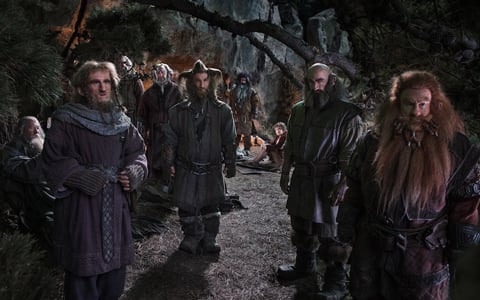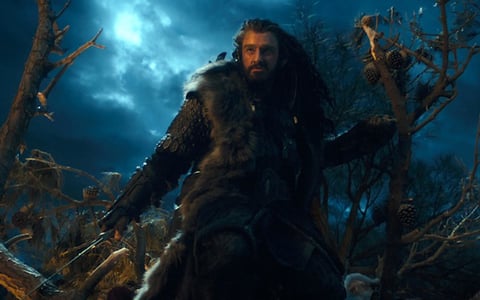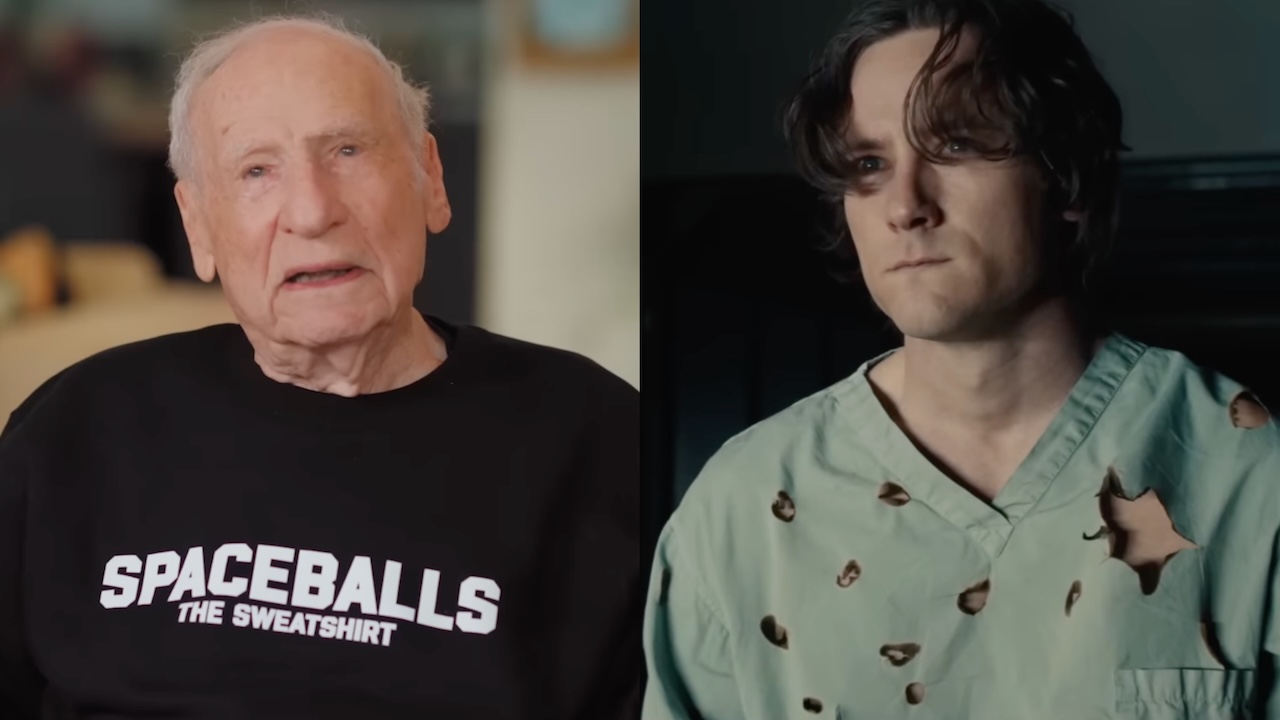The Hobbit: An Unexpected Journey -- 8 Big Differences Between The Book And Movie

Even though the movie is coming to theaters on Friday, it's still a little hard to believe that J.R.R. Tolkien's The Hobbit will be made into three whole movies. Sure, the book is the prequel to the epic Lord of the Rings trilogy, but it's also famously short and written for children. How does Peter Jackson plan to wring any kind of drama out of it?
WIth the first installment of the new trilogy, An Unexpected Journey, we're finally getting an idea of how it will work-- and though the story sticks closely to the big beats of the book you remember, there are are some additions and even, over the course of two and a half hours, some parts left out. Read below for the eight biggest differences between The Hobbit book and movie, and once you've seen it, jump into the comments to let us know what you think of the changes!
SPOILERS HEAD FOR THE HOBBIT BOOK AND MOVIE

It starts with a massive flashback to Smaug's takeover of Erebor.
Before we see Bilbo, Gandalf or any of the main characters, the story begins by showing us the dragon's invasion of the dwarves' ancestral homeland-- setting up the stakes for their desire to take their home back, and giving us a peek at the dragon who doesn't appear in the rest of the movie. It's very similar to the start of Fellowship of the Ring, when Galadriel gave us a quick rundown of Middle Earth. You'll have to decide for yourself if it's wise to start a movie without its title character, though.

Thorin Oakenshield really, really hates elves.
In that flashback to Erebor we see a band of elves-- led by Lee Pace's Thranduil-- watching on as Smaug takes over the dwarves' home, deciding not to intervene. That's enough for Thorin to hold a major grudge, which comes into play when Gandalf leads them all to Rivendell later on in the film. Dwarves and elves are never known for their friendship, but this slap in the face from the past gives Thorin good reason to be irritable.
Your Daily Blend of Entertainment News

There are just two songs, both sung by dwarves.
For whatever reason Tolkien assumed that, because The Hobbit was aimed at younger readers, most of the characters ought to break out into song at some point. Two of those songs remain, both of them sung by the dwarves when they invade Bag End for a surprise dinner party-- and both probably earning eye rolls from audience members who haven't read the book. But the one sung by the elves welcoming the group to Rivendell, and both goblin songs, are gone.

Radagast the Brown makes an appearance.
A skilled but humble wizard mentioned only briefly in the Lord of the Rings, Radagast appears in the flesh for the first time in An Unexpected Journey, warning Gandalf, Bilbo and the dwarves of some strange activities in his forest-- soon to become Mirkwood-- that hints at the return of the Necromancer, a.k.a. Sauron. None of the details are included in The Hobbit, though they were happening at the time according to Tolkien's own appendices to Return of the King. The details are included here, like many others, in the interest of setting up the larger story that will lead to Lord of the Rings.

Gandalf meets with The White Council.
Because the action in The Hobbit is entirely limited to what happens to Bilbo, we don't see anything he doesn't-- including this meeting between Gandalf, Galadriel, Saruman and Elrond, which Tolkien describes in the appendices. The scene is a chance to bring back familiar faces from Lord of the Rings, of course, but it also gives a little extra weight to the story, once again helping lead into the heavy drama of Lord of the Rings. This all happens while Bilbo and the dwarves are hunkered down in Rivedell, which in the book happens over several weeks, but seems to be just a day or two here.

Orcs and Wargs are on their tail the whole time.
In the extra back story we're given about the dwarves and Thorin in particular, we see how he got his name Oakenshield, facing down the Orc Azog the Defiler in an attempt to save Erebor, and cutting off his arm in the process. Turns out Azog didn't die after all, and is trailing the dwarves and Bilbo throughout their journey along with a band of fellow angry Orcs and their wolf-like Wargs. This gives the story a bit more stakes than the episodic, "And then we did this, and then we did this" structure of the book, and also allows the showdown at the end of the story-- with the dwarves in trees and throwing flaming pinecones-- to be a little more dramatic than when they were simply chased by irritated goblins.

The Stone Giants are a much bigger presence.
You might think the Stone Giants, who interrupt the group right before they arrive on the goblin lair in the mountains, weren't in the book at all, since they take up about three sentences in the book, one of them in which Thorin worries they'll be "picked up by some giant and kicked sky-high for a football!" Jackson rightly gives the giants much more of a showcase here, since hey, if you're going to spend the money on those effects, you may as well use them.

BIlbo is a much more active character.
Though the presence of the little hobbit who just wants to go home is an amusing counterpoint to the action in the book The Hobbit, Bilbo is the hero of these three movies, and therefore needed to be a little bit more involved in the action. The biggest change this results in comes when the group is captured by the group of mountain trolls. In the book, Gandalf tricks the trolls into not eating the dwarves until the sun rises, which turns the trolls to stone. In the movie, the trick is actually Bilbo's idea, and Gandalf steps in at the last minute with a well-timed stone crack that sends the sunlight streaming in. Bilbo also pitches in for the final confrontation with the Orcs, which definitely suggests he'll be more of a heroic figure in the movie to come.
This poll is no longer available.
Staff Writer at CinemaBlend

